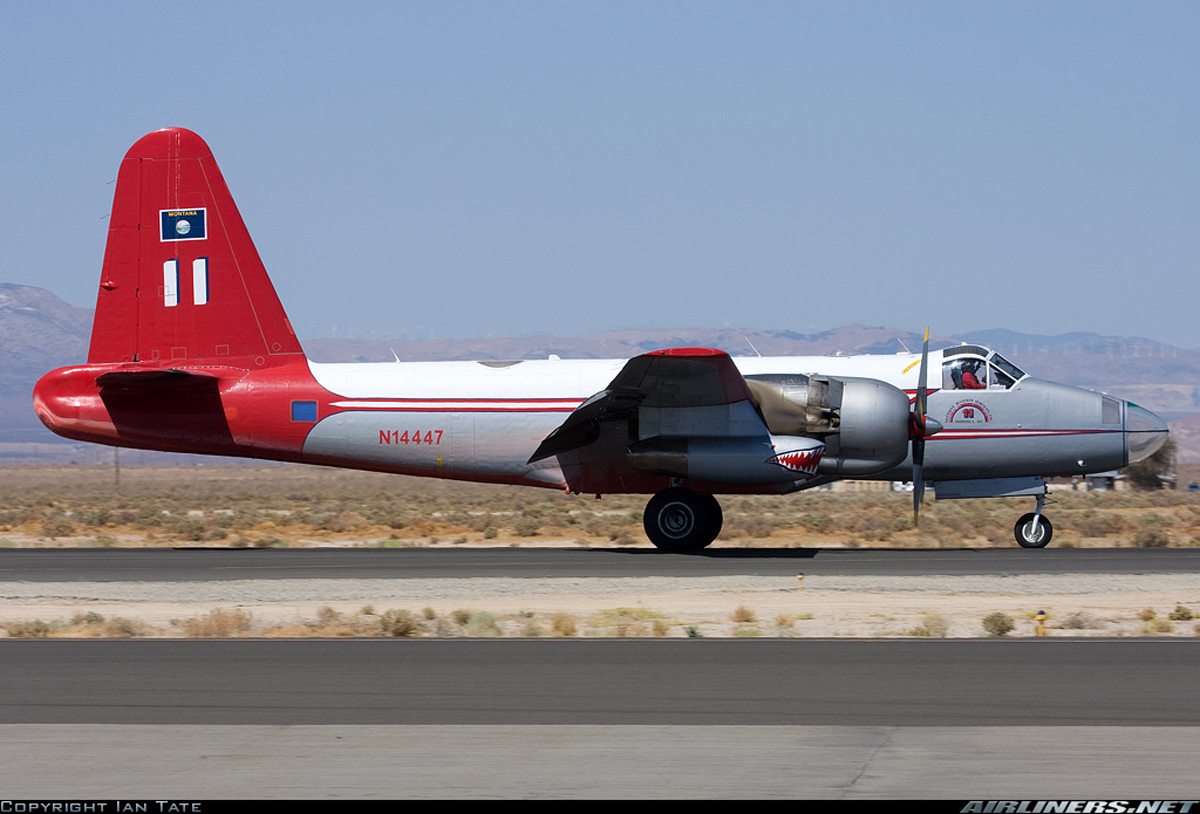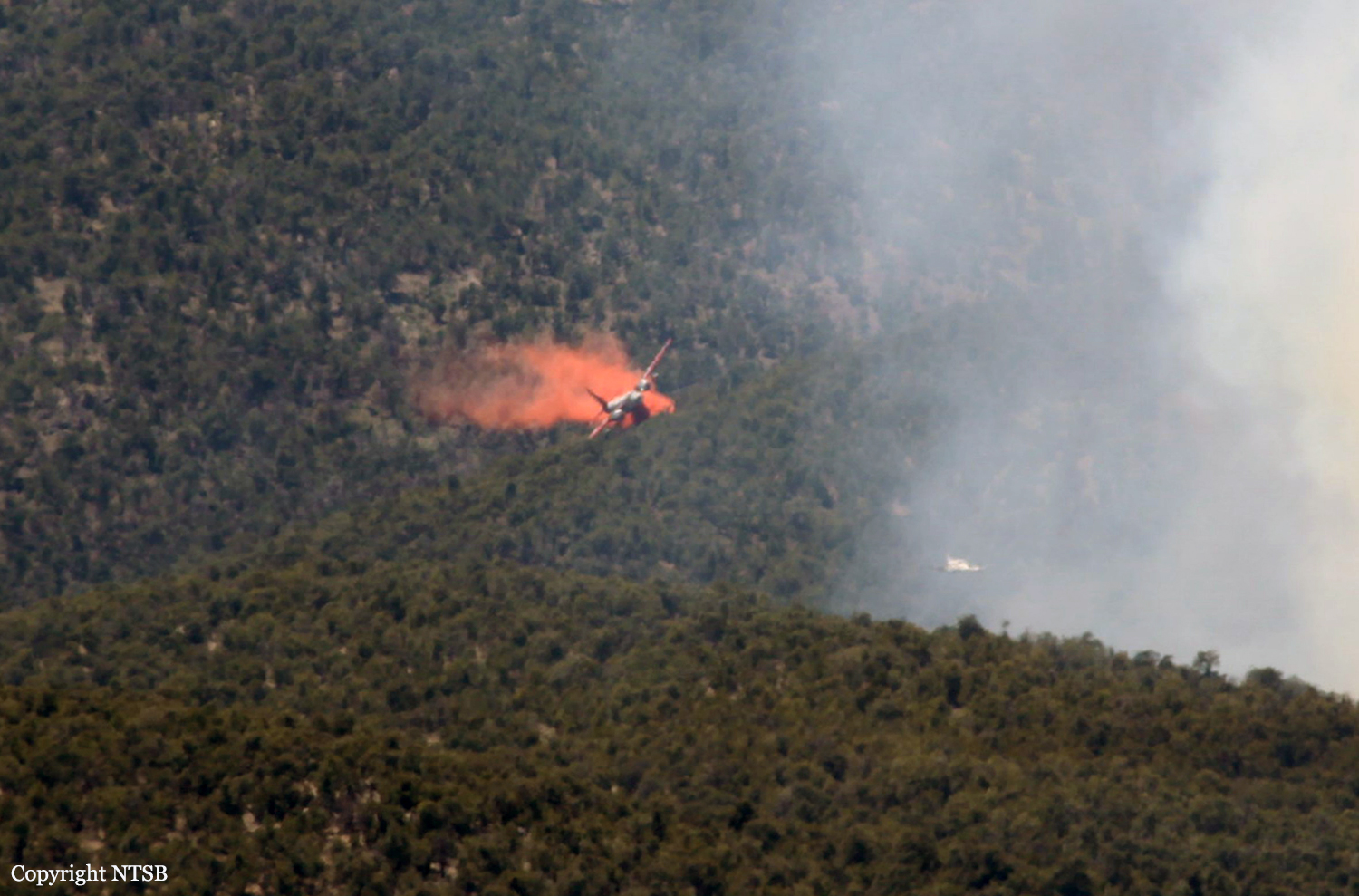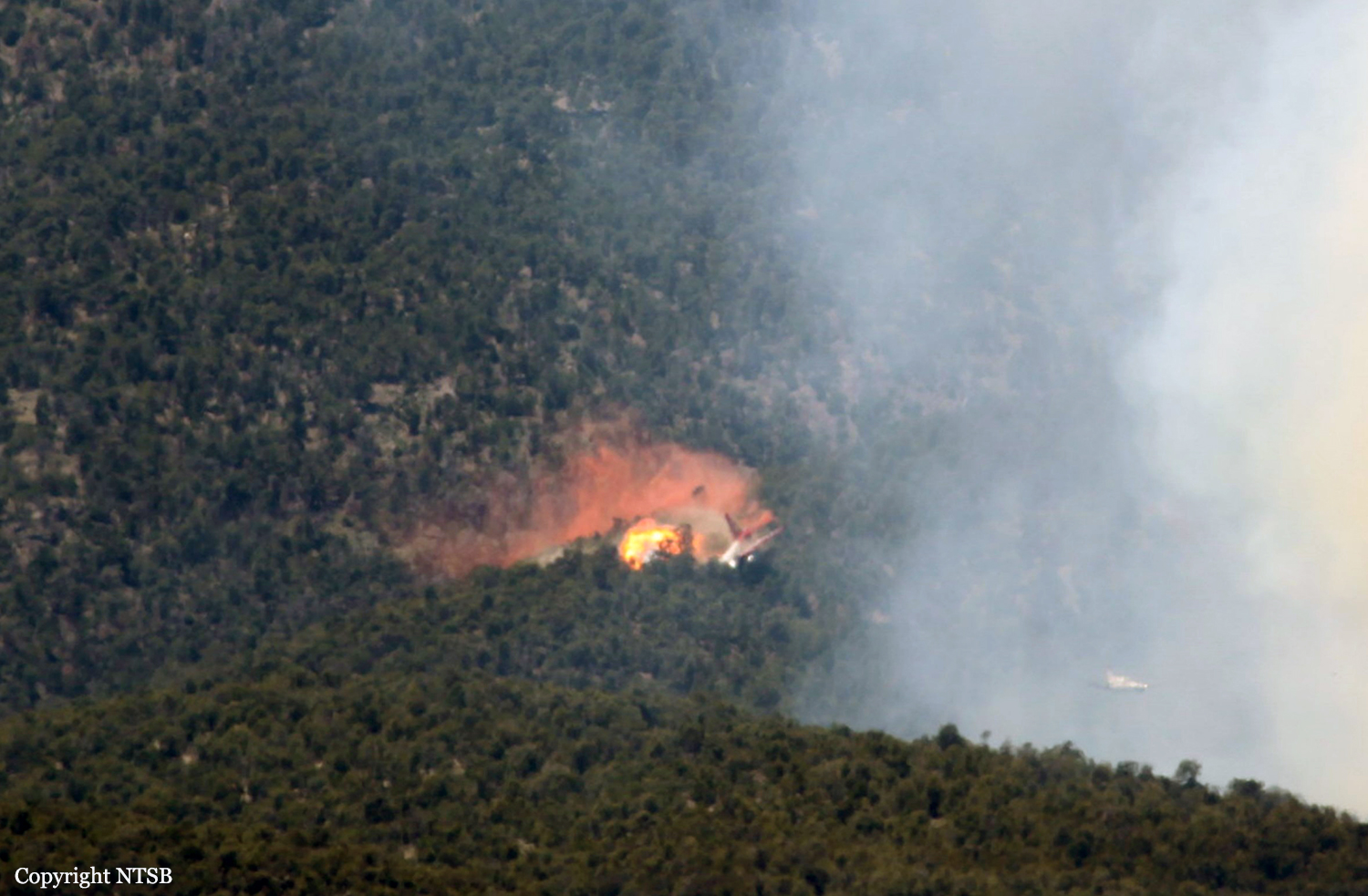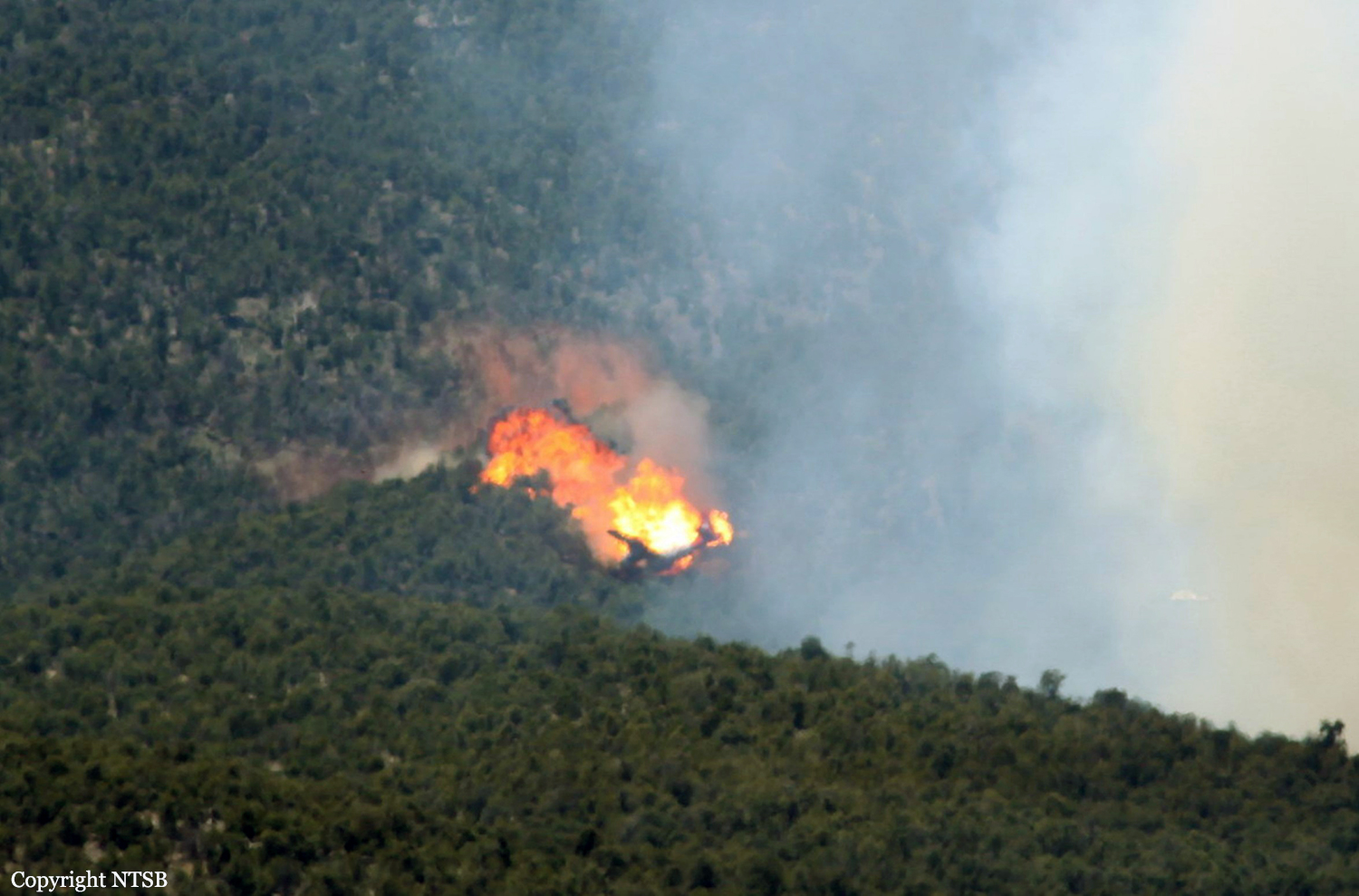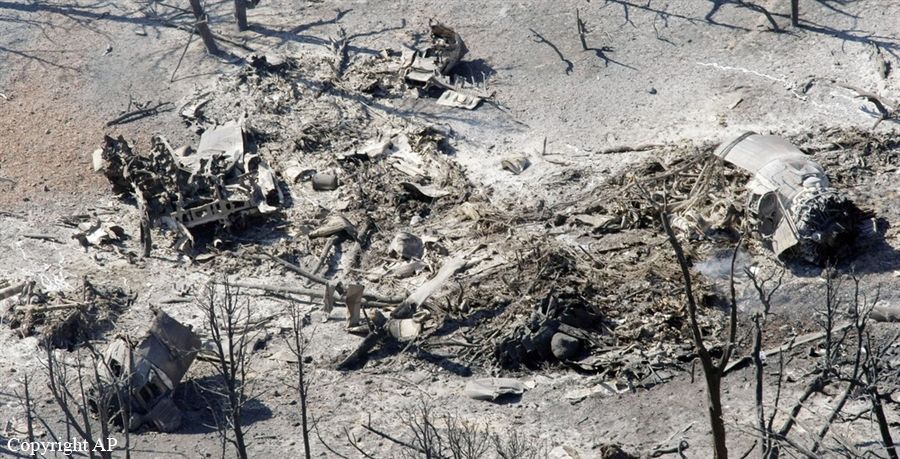Country
Crash of a Lockheed SP-2H Neptune in Fresno
Date & Time:
Jun 15, 2014 at 2044 LT
Registration:
N4692A
Survivors:
Yes
Schedule:
Porterville - Porterville
MSN:
726-7247
YOM:
1958
Flight number:
Tanker 48
Crew on board:
2
Crew fatalities:
Pax on board:
0
Pax fatalities:
Other fatalities:
Total fatalities:
0
Captain / Total hours on type:
2010.00
Copilot / Total hours on type:
2650
Aircraft flight hours:
10484
Circumstances:
The captain reported that, while returning to the departure airport following an uneventful aerial drop, he noticed that the hydraulic pressure gauge indicated 0. The first officer subsequently verified that the sight gauge for the main hydraulic fluid reservoir was empty. The flight crew began performing the emergency gear extension checklist and verified that the nosewheel landing gear was extended. The captain stated that the first officer then installed the pin in the nosewheel landing gear as part of the emergency checklist. As the flight crewmembers diverted to a nearby airport because it had a longer runway and emergency resources, they briefed the no-flap landing. The first officer extended the main landing gear using the emergency gear release, which resulted in three down-and-locked landing gear indications. Subsequently, the airplane landed normally; however, during the landing roll, the nosewheel landing gear collapsed, and the airplane then came to rest nose low. Postaccident examination of the airplane revealed that the nosewheel landing gear pin was disengaged from the nosewheel jury strut, and the pin was not located. The disengagement of the pin allowed the nosewheel landing gear to collapse on landing. It could not be determined when or how the pin became disengaged from the jury strut. Installation of the pin would have required the first officer to maneuver in a small area and install the pin while the nose landing gear door was open and the gear extended. Further, the pin had a red flag attached to it. When inserted during flight, the flag encounters a high amount of airflow that causes it to vibrate; this could have resulted in the pin becoming disengaged after it was installed. Evidence of a hydraulic fluid leak was observed around the right engine cowling drain. The right engine hydraulic pump case was found cracked, and the backup ring was partially extruded, which is consistent with hydraulic system overpressurization. The reason for the overpressurization of the hydraulic system could not be determined during postaccident examination.
Probable cause:
The collapse of the nosewheel landing gear due to the disengagement of the nosewheel landing gear pin. Contributing to the accident was the failure of the main hydraulic system due to overpressurization for reasons that could not be determined during postaccident examination of the airplane.
Final Report:
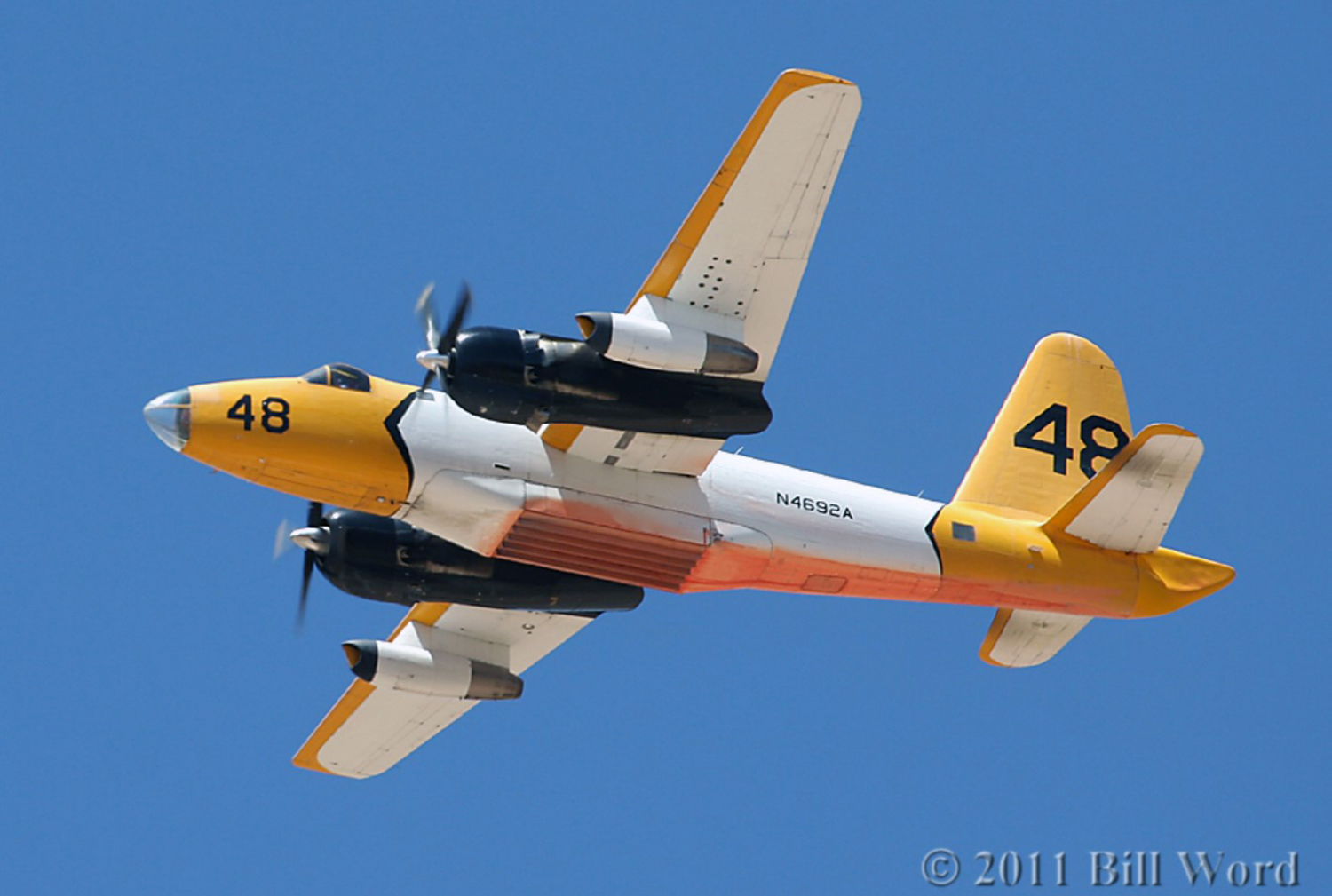
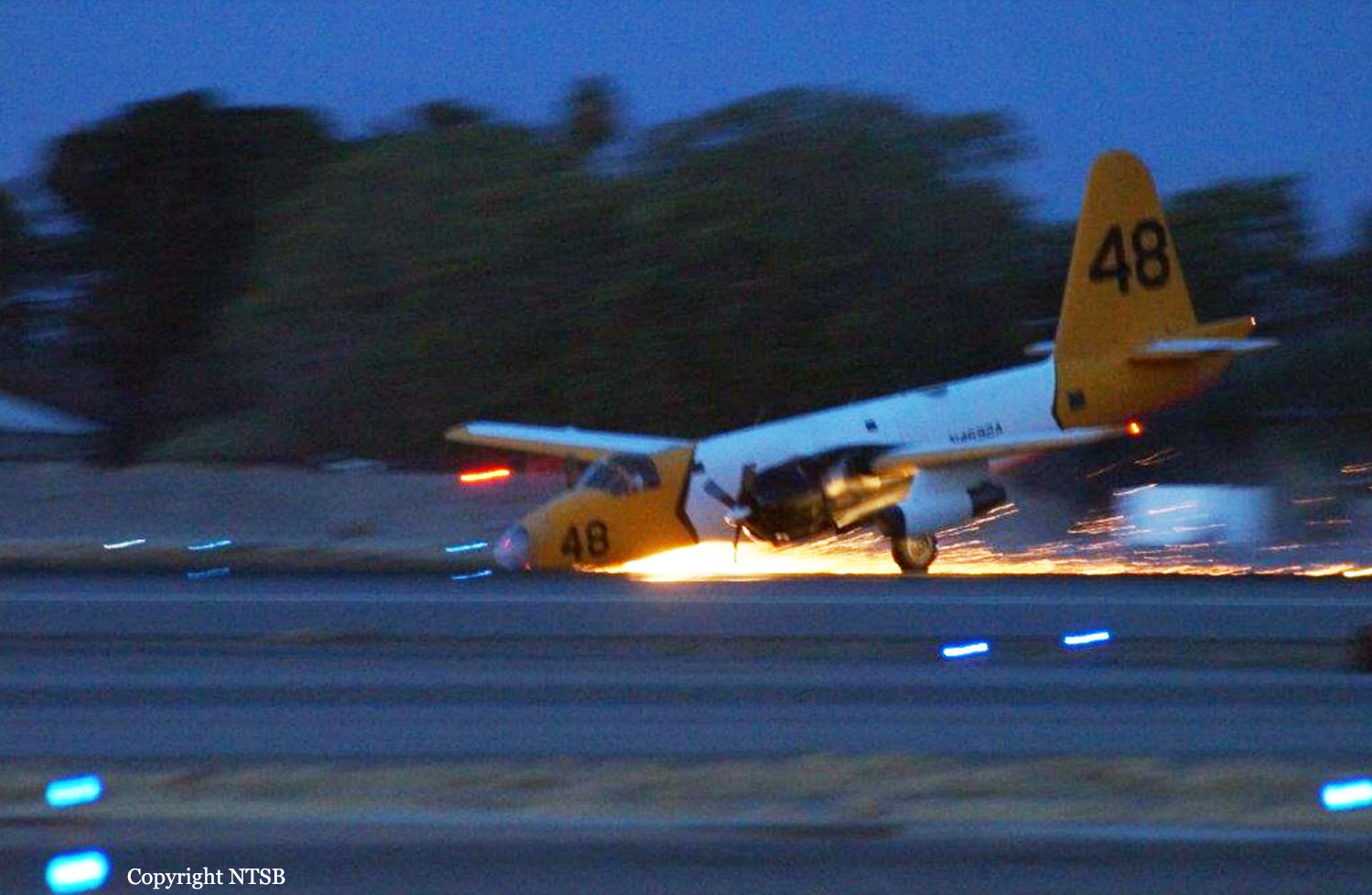
Crash of a Lockheed P2V-7 Neptune near Modena: 2 killed
Date & Time:
Jun 3, 2012 at 1347 LT
Registration:
N14447
Survivors:
No
Schedule:
Cedar City - Cedar City
MSN:
826-8010
YOM:
1959
Flight number:
Tanker 11
Crew on board:
2
Crew fatalities:
Pax on board:
0
Pax fatalities:
Other fatalities:
Total fatalities:
2
Captain / Total hours on type:
1850.00
Copilot / Total hours on type:
38
Aircraft flight hours:
12313
Circumstances:
The airplane collided with mountainous terrain while conducting firefighting operations, 20 miles north of Modena, Utah. The airplane was operated by Neptune Aviation Services under contract with the US Forest Service as an exclusive public-use fixed-wing airtanker service contract conducted under the operational control of the Bureau of Land management (BLM). Both pilots were fatally injured. The airplane was destroyed by impact forces and post crash fire. Visual meteorological conditions prevailed, and a company flight plan had been filed. The flight originated in Cedar City, Utah, at 1315. The crew of Tanker 11 consisted of the pilot, copilot, and crew chief. They were based out of Missoula, MT, and had been together as a crew for the previous 3 weeks. Normally, the crews stay together for the entire fire season. Tanker 11 crew had operated out of Reno for the 2 weeks prior to the accident. During fire drop operations the tanker is manned by the pilot and copilot, while the crew chief remains at the fire base as ground personnel. The day before the accident while en route from Reno to Cedar City they performed one retardant drop on the White Rock fire, then landed at Cedar City. The crew departed the Cedar City tanker base and arrived at their hotel in Cedar City around 2230. The following morning, the day of the accident, the crew met at 0815, and rode into the Cedar City tanker base together. Tanker 11 took off at 1214 on its first drop on the White Rock fire, and returned at 1254. The crew shut down the airplane, reloaded the airplane with retardant, and did not take on any fuel. Tanker 11 departed the tanker base at 1307 to conduct its second retardant drop of the day, which was to be in the same location as the first drop. Upon arriving in the Fire Traffic Area (FTA) Tanker 11 followed the lead airplane, a Beech Kingair 90, into the drop zone. The drop zone was located in a shallow valley that was 0.4 miles wide and 350 feet deep. The lead airplane flew a shallow right-hand turn on to final, then dropped to an altitude of 150 feet above the valley floor over the intended drop area. While making the right turn on to final behind the lead plane, Tanker 11's right wing tip collided with terrain that was about 700 feet left of the lead airplane's flight path, which resulted in a rapid right yaw, followed by impact with terrain; a fire ball subsequently erupted. Tanker 11 created a 1,088-foot-long debris field and post impact fire.
Probable cause:
The flight crew's misjudgment of terrain clearance while maneuvering for an aerial application run, which resulted in controlled flight into terrain. Contributing to the accident was the flight crew's failure to follow the lead airplane's track and to effectively compensate for the tailwind condition while maneuvering.
Final Report:
